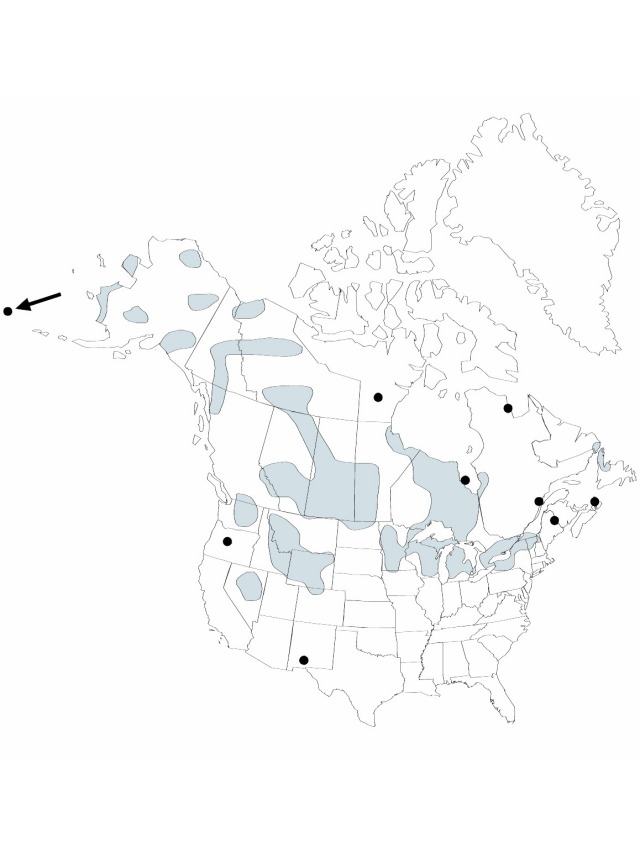Stuckenia filiformis subsp. occidentalis
Novon 8: 241. 1998.
Stems 20–100 cm. Leaves: stipules disintegrating with age, those on proximal portion of stem inflated; blade inflated; 0.2–5 mm wide. Inflorescences: peduncles with flower and/or fruits adjacent or separated by less than 2 cm. Fruits often absent.
Phenology: Flowering spring–early fall.
Habitat: Calcareous waters, mainly in cold, slow- to fast-flowing streams and rivers, occasionally in standing waters of ponds and lakes
Elevation: 0–2195 m
Distribution

Alta., B.C., Man., N.B., Nfld. and Labr., N.W.T., N.S., Nunavut, Ont., P.E.I., Que., Sask., Yukon, Alaska, Colo., Idaho, Iowa, Maine, Mich., Minn., Mont., Nev., N.H., N.Mex., N.Y., N.Dak., Oreg., Utah, Vt., Wash., Wis., Wyo.
Discussion
In the Great Lakes region, the name Potamogeton [Stuckenia] vaginatus has often been misapplied to this taxon. The distribution of S. vaginatus is further to the north and west than the Great Lakes region, however. Stuckenia filiformis subsp. occidentaliis rarely produces fruit in the eastern portion of its range, while to the north and west it commonly fruits. This subspecies is very similar to Potamogeton rostratus Hagström ([the combination does not exist within the genus Stuckenia)] of Asia and may prove to be the same taxon. Both grow in similar habitats. The proximal stipules are much enlarged and inflated, and the leaves are generally wider than the other subspecies.
Selected References
None.
Lower Taxa
"not elongating" is not a number.